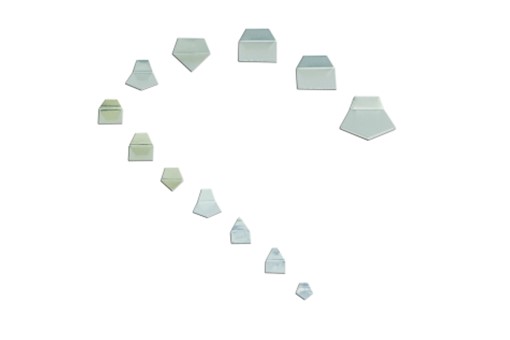State support for farmers. How will the changed mechanism of assistance from the Ministry of Agriculture affect the agricultural sector?

RUSSIA again faces the question of preserving its achieved agricultural potential. it is known that the successful and sustainable functioning of the agro-industrial complex is determined, first of all, by state support for the industry, the basis of which was created in 2003. However, 2024 could be the year of change. Professor of the Department of General Agriculture and Agroecology, Faculty of Soil Science, Moscow State University, shared his opinion on the situation with the journal “Agrotechnics and Technologies”. M. V. Lomonosov Dmitry Khomyakov.
The first fundamental changes in the Russian agro-industrial complex began to occur at the time of the change in the economic mechanism after 1992. The second wave of transformations began in the mid-2000s due to positive changes in the internal economic situation and external favorable factors. This contributed to the rapid transformation of agricultural technologies, the introduction of innovations, the adaptation of global scientific experience and, most importantly, the growth of government support for the industry from budgets at all levels. The third stage began after 2014, when Russia found itself in a new political and economic reality. The response to the challenges was again associated with increasing assistance and attention from the state.
Over the past 32 years, our country has gone from food dependence to independence and the opportunity to become the largest exporter, a significant participant in the world market of food products, agricultural raw materials and mineral fertilizers. At the end of 2023, the volume of EXPORT supplies of Russian agricultural products amounted to more than $45 billion. The largest share in its structure - about 38% - traditionally falls on grain. Russia remains the world leader in wheat supplies, occupying 25% of the market. This was reported byMinister of Agriculture Dmitry Patrushev.
It would seem that whoever owns the grain owns the world. However, according to the results of the balance of payments of the Russian Federation from the Central Bank as of January 19, 2024, in 2023 compared to 2022 there was a decrease in the positive trade balance by $197.3 billion to $118.3 billion. The reason is a decrease in exports by $169.4 billion to $422.7 billion, which is explained by the deterioration in the price environment for the main Russian export goods. At the same time, there was an increase in imports of goods by $27.9 billion to $304.4 billion.
The contribution of the Russian agro-industrial complex to the increase in the volume of export supplies continues to remain quite significant: it amounts to almost 10.6% of our country’s total exports. Today Russia supplies food to 169 countries. The main partners were CHINA , Turkey , Kazakhstan , Kyrgyzstan, Egypt , Belarus, India, Saudi Arabia and Uzbekistan . In addition, trade cooperation has been established with the Republic of Korea , Japan, North Korea, Mongolia and other countries. However, the achieved successes can easily be lost if government support for the agricultural sector decreases.
Agricultural policy involves the active participation of the state in financing agriculture, distributing cash income, seasonal and universal lending, and state insurance against the risks of loss of crops or farm animals. There are now more than 30 measures to support agricultural producers, including partial subsidies of interest rates on long-term loans. Also, support measures in the agro-industrial complex include reducing the costs of business entities associated with the implementation of various administrative and permitting procedures.
But will these support mechanisms continue in 2024? And if not, how will this affect the Russian agro-industrial complex? Let's look at the main innovations.
First of all, starting from 2024 , the Ministry of Agriculture will combine two mechanisms of state support for the agricultural sector - compensating and incentive subsidies . A single subsidy will cover 12 priority areas, including those previously selected by the state. The regions will definitely have access to support for five of the 12 areas, namely: 1) agrotechnological work; 2) elite seed production; 3) livestock breeding; 4) small forms of management; 5) agricultural insurance.
Of the remaining 7 areas, each region can choose 3 for which the state will allocate subsidies. These are: 1) traditional sub-sectors of agriculture and reindeer husbandry; 2) production of fiber flax and (or) industrial hemp; 3) production of fruit and berry plantings; 4)MILK production ; 5) beef cattle breeding; 6) sheep breeding, goat breeding and wool production; 7) deep processing of grain and (or) processing of cattle , goat and sheep milk into food products. Changes in state support are enshrined in Decree No. 2065 of December 2, 2023 “On Amendments to Certain Acts of the Government of the Russian Federation.”
Let us recall that the basis for the development of agriculture in our country is 5 large-scale state programs: 1) development of agriculture and regulation of markets, agricultural products, raw materials and food (state program of agriculture); 2) integrated development of rural areas (CRDT); 3) effective involvement of agricultural lands into circulation and development of the reclamation complex of the Russian Federation (state program Land); 4) development of the fishery complex; 5) federal scientific and technical program for the development of agriculture.
The purpose of these programs is to influence the growth, development and sustainability of the agro-industrial complex, its economic efficiency. Thus, in accordance with Articles 8 and 9 of the Federal Law of December 29, 2006 No. 264-FZ “On the Development of Agriculture”, the state program is a document defining the goals, main directions of agricultural development and regulation of these markets for the medium term, financial support and mechanisms implementation of the envisaged activities. Like all the other 3 programs, it has a passport containing the structure of proposed actions, funding targets and indicators for achieving goals by year. Financial support consists of three sources: the federal budget, the consolidated budgets of the constituent entities of the federation and extra-budgetary sources.
However, when adopting the federal budget for the next year and the forecast two-year period, the volumes of funding for activities provided for in state programs (comprehensive programs) of the Russian Federation are usually adjusted and do not coincide with the values originally indicated in the passports. For four programs related to the agro-industrial complex, this is a significant reduction in funding. 2024 and subsequent years were no exception, according to the approved federal budget.
Let us recall that the resource provision of state programs from the federal budget of the Russian Federation in 2023 was initially provided for in the amount of 446 billion rubles. At the end of the year, taking into account additionally allocated funds, it reached 545 billion rubles. But in 2024 this figure will be lower and amount to 544 billion rubles. (22 billion of them will be allocated through reserved additional expenses). At the same time, we must not forget about the increase in the key rate of the Central Bank of the Russian Federation, which required more budgetary funds compared to those originally planned to compensate banks providing preferential lending to the agricultural sector.
Of course, there are positive trends, but a number of important issues still remain unresolved. These include low profitability of the industry, insufficient modernization and updating of the technical base, debt burden of agricultural producers, mostly high interest rates, which leads to a decrease in the profitability of agricultural production.
For example, without government support, the production of cattle and lamb MEAT is unprofitable. The minimum profitability of farms is maintained today only thanks to subsidies. State support plays an equally significant role in the dairy industry. And what is happening in farms and private farms, where about 18% and 40%, respectively, of all cows in Russia are concentrated? According to the Ministry of Agriculture, the profitability of agriculture (these figures cover only agricultural organizations) in 2023 decreased to 19.1% from 20.3% in 2022. This figure takes into account subsidies. Without them, the profitability forecast is 15.8% versus 16.3%. In grains, profitability was strong from 2018 to 2022. It was 41.8% with minimal government support. This year the figure will drop to 30%.
It is obvious that without assistance from the state, Russian agricultural organizations will be forced to exist on the edge of profitability. Therefore, competent state support for the agricultural sector is vital. But what should it be so that the industry can remain at the achieved technological level?
Until 2020, there was a single subsidy as part of state support for the development of the agro-industrial complex. In the same year, it was divided into incentive and compensation. The purpose of the latter is to compensate for the lost income of producers. It included: per-hectare support in crop production, subsidies in dairy and livestock breeding, and agricultural insurance. However, as was said, from 2024 these two support mechanisms will be combined again. Consequently, the regions bear additional responsibility for assistance and support of small businesses.
Of course, effective government support for the agro-industrial complex is the basis for the successful and systematic implementation of Russia’s food policy. Consequently, its volumes and mechanisms are of priority importance in the new geo-economic conditions. However, by providing compensation, state support can contribute to the withdrawal of small farms from the market and its monopolization due to rising loan rates (following the key rate of the Central Bank) issued by authorized banks to agricultural producers. As a result, large and strong businesses with lobbying capabilities and connections will win. Meanwhile, it is the diversity of structures that has been and remains the basis for the stability of the agricultural sector and its social function - filling the population with population and developing the country’s non-urban territory. That is why private household plots are a form of social adaptation of the rural population that must be preserved.
In today’s reality, the main source of support for agricultural producers is the federal budget, and, therefore, a possible decrease in funding for all five government programs (including scientific support) carries not only the risks of reducing the growth rate of the industry and its investment attractiveness, but also ensuring the country’s food security .
In this regard, it is worth mentioning the “List of instructions following the launch of a breeding center for turkey reproduction in the Tyumen region” (approved by the President of the Russian Federation on November 21, 2022), prescribed to the government:
a) taking into account previously given instructions, take measures to adjust the Development Strategy of the agro-industrial and fishery complexes of the Russian Federation for the period until 2030 in order to ensure the average annual growth rate of production volumes of the agro-industrial complex (hereinafter referred to as the agro-industrial complex) at a level of at least 3% per year, turning attention to the need to: assess the development of key segments of the agro-industrial complex, including analysis of the influence of production factors of the main types of agro-industrial products, assessment of development restrictions and areas of additional support for the purpose of accelerated development of such segments; identifying promising segments of the agro-industrial complex, including the production of highly processed products; the formation of measures sufficient to ensure technological sovereignty in the agro-industrial complex, as well as the establishment of annual indicators for import substitution of critical types of agricultural products, as well as products used in the agro-industrial and fishery complexes; introducing new or expanding existing government support measures (broken down by key segments of the agro-industrial complex) taking into account the analysis of their sufficiency, ensuring the above average annual growth rate, including the development of new areas of production and export of finished products; reflecting the relationship between key government support measures, declared required volumes and sources of financing with target indicators.
It remains to implement on time and strictly carry out the instructions of the President of the Russian Federation.




























































